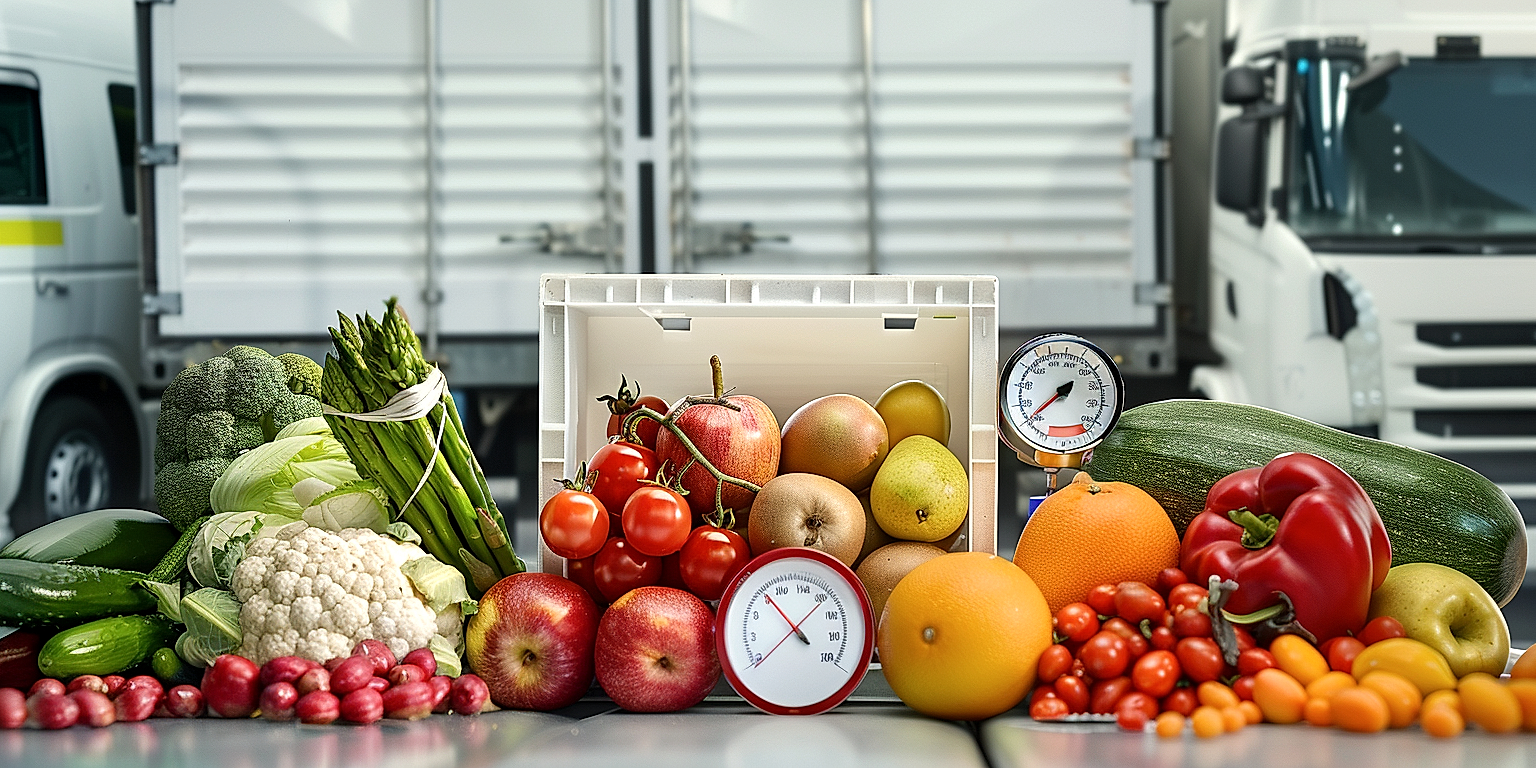Safety is paramount in every industry, but it takes on even more importance in the realm of produce shipping due to the fragility of the cargo and the health implications of improperly handled goods.
A company that places high priority on safety is not only protecting its reputation but also demonstrating its commitment to the wellbeing and health of its consumers.
This necessitates that businesses establish a culture of safety from the ground up.
However, this cultural change cannot happen overnight.
It involves a series of deliberate and calculated steps, policies, and procedures.
The structuring and implementation of a safety-first business model can be demanding, but the benefits extend far beyond avoiding accidents or injuries.
Steps To Creating A Safety-first Culture In Produce Shipping
1. Prioritize safety training within the shipping team
The hierarchical structure within the produce shipping industry mandates the prioritization of safety training among the shipping team.
The shipping team forms the backbone of the entire business process and their role cannot be overstated.
As such, it is paramount that safety procedures are not only understood in theory but are seamlessly incorporated into their daily operations.
Effectively managing safety protocols requires comprehensive training, refresher courses and regular safety drills.
The efficacy of such measures is directly dependent on the level of commitment from the team.
Therefore, a significant amount of time and resources need to be dedicated to providing quality safety education.
The training should be a combination of theoretical knowledge and practical demonstration–as the old adage goes, “practice makes perfect”.
Moreover, training should not be a one-time event—rather, it should be ongoing, with regular updates and refreshers to keep up with industry standards and advancements in technology.
This not only ensures the continued safety of team members but also contributes to their professional growth, leading to improved performance and productivity.
Furthermore, it is essential to ensure that safety training is personalized to cater to the unique needs and scenarios of a produce shipping environment.
This aids in the application of safety protocols in real life situations, by equipping employees with applicable safety knowledge specific to their duties.
The shipping team should be well conversant with the proper handling of fruits and vegetables, the right procedures for packaging, and the correct ways of loading and unloading the produce.
It is also crucial to implement measures to ensure the proper use of shipping and handling equipment.
Through safety training, potential risks can be identified and preventive measures put in place to minimize the occurrence of accidents in the workplace.
However, despite the emphasis on safety training, it’s important to remind employees that safety is everyone’s responsibility.
Lastly, ensuring safety within the shipping team goes hand in hand with building a safety-first culture in the organization.
2. Regular Checks on Handling, Packaging Equipment
The importance of implementing regular checks on handling and packaging equipment cannot be overstated in creating a safety-first culture in produce shipping.
It’s worth remembering that this approach is the key to preventing accidents before they occur.
Regular checks give us the opportunity to identify potential hazards before they can cause harm.
Regular checks thereby contribute significantly to the enhancement of overall safety practices within the shipping department.
Checking on handling and packaging equipment regularly is a crucial preventative measure in ensuring safe operations.
Consider it a factor that significantly minimizes errors, and subsequently enhances the level of safety and cleanliness in the shipping operation.
This, in turn, reflects positively on the reputation of the business, leading to increased customer satisfaction, which aids in achieving a significant competitive advantage in the market.
In addition, regular checks allow for detecting and remedying defects in the handling and packaging equipment.
This is particularly necessary for shipping perishable produce, as any delays caused by faulty equipment can lead to damage and financial loss.
Importantly, regular checks also help in ensuring compliance with regulatory standards.
Most regulations necessitate strict adherence to safety standards, including the proper functioning of handling and packaging equipment.
Regular checks are therefore an effective strategy in averting penalties arising from non-compliance with regulatory norms.
Naturally, these checks should be carried out using a systematic approach.
Creating a checklist or an inventory of the equipment in use can be very helpful in maintaining thorough regular checks.
Furthermore, it is imperative to keep an accurate record of the results of these checks for future references and continuous improvement.
Finally, this ongoing routine of regular checks must be strictly integrated into the shipping team’s workflow for a sustainable safety-first culture.
3. Implement Comprehensive Safety-First Guidelines
Creating a safe environment within the shipping industry is a significant step toward fortifying the company’s reputation, reducing injuries, and saving money.
Your safety first strategy should include the creation and implementation of comprehensive safety-first guidelines.
The guidelines should cover every aspect of the daily operations of the shipping team.
These comprehensive guidelines should aim to address and prevent potential risks and hazards that face the shipping team.
As such, this document will serve as the de facto safety bible for your team.
It not only guides the team on what to do but also sets clear expectations for the management and the workforce at large.
The safety guidelines should discourage any form of complacency when handling produce and instead lay a premium on safety.
It’s pertinent to note that ensuring safety in shipping is not an event but a continuous process.
Therefore, it’s essential these guidelines are comprehensive and leave no gaps that might be exploited, inadvertently risking safety on the shop floor.
To ensure the guidelines are comprehensive enough, consider incorporating insights from industry standards and regulations as well as the unique risks in your company.
The guidelines should incorporate the entire gamut of shipping operations, from handling the produce at the warehouse, loading it into the trucks, and unloading it at the destination.
It’s important that the guidelines are clear and understandable to all the team members.
For this reason, consider presenting the information in a user-friendly format.
For instance, you can opt to use flow charts, images, diagrams, and written instructions that are all aimed at ensuring the safety of all employees and produce.
It’s beneficial to involve various shipping team members in creating these guidelines to ensure they are practical, effective, and they reflect the realities of the work environment on the ground.
Lastly, implementing these guidelines will require effort and commitment from every team member.
However, once every team member understands the importance of the safety first guidelines, the process of implementation becomes smoother.
This effort and commitment are necessary for protecting the team members and maintaining the quality of shipped produce.
4. Regularly Review Safety Performance
At the heart of creating a safety-first culture in produce shipping is the step of regularly reviewing safety performance.
This involves a systematic evaluation of safety records, incidents and mishaps, equipment conditions, and employees’ adherence to established safety protocols.
The frequency of safety performance reviews should be established according to the nature and intensity of the shipping activities.
Monthly, quarterly, semi-annual or annual reviews might be appropriate based on the organization’s context and needs.
These reviews help identify any trends or patterns in safety faults or incidents, which can serve as a basis for proactive measures for safety enhancement.
Regular safety performance reviews enable organizations to identify areas of success and those that may need improvements, aiding in fostering a safety-first culture.
They also serve as an opportunity to assess the effectiveness of previously implemented safety measures and initiatives.
It would be more effective if a safety committee, consisting of representatives from various divisions, is entrusted with the responsibility of conducting these safety performance reviews.
Review findings should be communicated to all employees for increased transparency and collective ownership of safety in the shipping department.
Alongside, it is essential to engage in a qualitative analysis of the safety performance by interviewing employees, understanding their experiences, and identifying any perception of risk or danger.
These insights can be instrumental in shaping further improvements in safety measures and cultivating a safety-first culture.
As a way to motivate employees’ efforts towards maintaining safety, organizations can recognize and reward departments or individuals who exhibit exceptional performance in observing and promoting safety measures.
Such initiatives help in fostering a positive safety culture and instilling a sense of responsibility among all members of the shipping team.
A tool that can be of immense help for regularly reviewing safety performance is a safety performance dashboard.
This dashboard could display key safety metrics, ongoing safety projects, and key results, serving as a visual and interactive tool for all employees to stay informed and motivated for maintaining safety.
The regular review of safety performance is therefore a crucial contributor to the creation of a safety-first culture, providing insight into performance and inspiring requisite adjustments to ensure a safe and healthy working environment.
5. Encourage Feedback and Safety Suggestions
Creating a safety-first culture in produce shipping requires the involvement of every team member.
To achieve this, it is essential to encourage feedback and safety suggestions from all employees.
By doing this, you bring everyone on board and make safety a collective responsibility.
Allowing workers to actively participate in safety processes promotes ownership and commitment to safety rules and guidelines.
Listening to the workforce encourages a communication culture thus promoting honesty and transparency.
Any safety concerns or potential hazards that might have been overlooked will come to light.
This openness keeps everyone informed and knowledgeable about safety practices significantly minimizing the risk of accidents.
The feedback mechanism could take various forms; it could be through suggestion boxes, safety meetings, or one-on-one sessions.
However, the channel used must promote honesty and inclusivity.
Workers need to feel comfortable and not fear victimization or retaliation for their safety suggestions or concerns.
To effectively implement this, it is important to appreciate all feedback provided, whether positive or negative.
Recognize and appreciate contributions and consider implementing viable suggestions.
This reinforces faith in the system and encourages more people to contribute, creating a vibrant safety-conscious atmosphere.
Remember, safety in the workplace is not just about rules and equipment, but it’s also about the attitude and behavior of everyone involved.
Therefore, encouraging feedback and safety suggestions creates a proactive safety culture where safety is not just enforced but becomes part of the job.
This way, it wraps up the steps to creating a safety-first culture in produce shipping, enhancing the safety of all employees, boosting productivity and promoting a positive working environment.
The Bottom Line
Taking diligent steps to ensure the safety of the shipping team is a primary focus.
Ramp up safety training programs, engage in consistent maintenance and scrutiny of handling and packaging equipment, and establish detailed safety-first guidelines.
Regular assessments of safety performance and open engagement with team members about their safety observations, ideas, and recommendations are also crucial.
As such, elevated standards of safety in the shipping department can be achieved through a robust, feedback-rich, and proactive safety culture.




